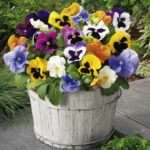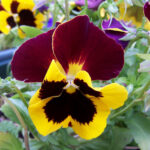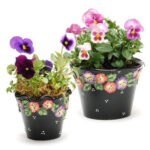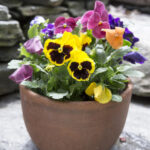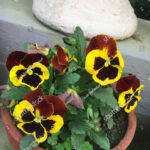Pansies (Viola x wittrockiana) are beloved for their vibrant colors and charming “faces,” making them a popular choice for gardens and containers. This guide will help you grow and care for these delightful flowers.
1. Understanding Pansies
Varieties:
- Spring/Summer Pansies: Ideal for cooler climates.
- Winter Pansies: Can survive mild winters and bloom early spring.
Colors:
- Pansies come in a wide range of colors including purple, blue, yellow, orange, red, and white. Many have bicolor patterns with distinctive dark centers or blotches.
2. Planting Pansies
Timing:
- Spring Pansies: Plant in early spring for late spring and early summer blooms.
- Fall Pansies: Plant in late summer to early fall for blooms in fall and through mild winters.
Location:
- Choose a spot with full to partial sun. Pansies thrive in cooler temperatures and may struggle in extreme heat.
Soil:
- Well-draining soil rich in organic matter is ideal. Soil pH should be slightly acidic to neutral (6.0 to 7.0).
Planting Steps:
- Prepare the Soil: Loosen the soil to a depth of about 6-8 inches and mix in compost.
- Spacing: Space pansies about 6-8 inches apart to allow for growth and air circulation.
- Planting: Dig a hole slightly larger than the root ball, place the plant in the hole, and backfill with soil. Press down gently and water thoroughly.
3. Caring for Pansies
Watering:
- Keep the soil consistently moist but not waterlogged. Water early in the day to allow foliage to dry before nightfall.
Fertilizing:
- Use a balanced, water-soluble fertilizer every 2-4 weeks. Too much nitrogen can lead to more foliage and fewer flowers.
Mulching:
- Apply a light layer of mulch to retain moisture and regulate soil temperature.
Deadheading:
- Regularly remove spent flowers to encourage continuous blooming and prevent seed formation.
Pest and Disease Control:
- Watch for aphids, slugs, and snails. Use insecticidal soap for aphids and organic slug pellets for slugs and snails.
- Ensure good air circulation to prevent fungal diseases like powdery mildew. Avoid overhead watering.
4. Overwintering Pansies
- In mild climates, pansies can survive winter with some protection. Mulch around the plants and cover with a frost cloth during severe cold snaps.
- In colder climates, consider growing pansies in containers that can be moved to a sheltered location during extreme weather.
5. Using Pansies in the Garden
Borders and Edging:
- Pansies make excellent border plants due to their compact size and colorful blooms.
Containers:
- Plant pansies in pots, hanging baskets, and window boxes for a cheerful display.
Companion Planting:
- Pansies pair well with other cool-season flowers like violas, snapdragons, and ornamental cabbages.
 Flower Love
Flower Love















